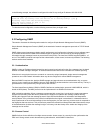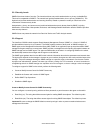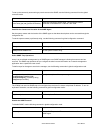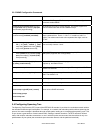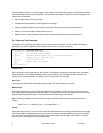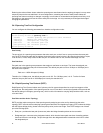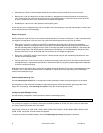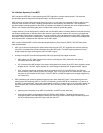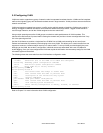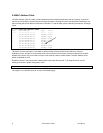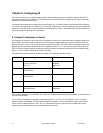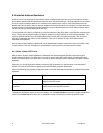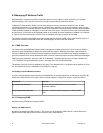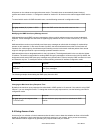5.4.4 Multiple Spanning-Tree (MST)
MST extends the IEEE 802.1w rapid spanning tree (RST) algorithm to multiple spanning trees. This extension
provides both rapid convergence and load balancing in a VLAN environment.
MST allows you to build multiple spanning trees over trunks. You can group and associate VLANs to spanning tree
instances. Each instance can have a topology independent of other spanning tree instances. This architecture
provides multiple forwarding paths for data traffic and enables load balancing. Networks are more reliable because a
failure in one instance (forwarding path) does not affect other instances (forwarding paths).
In large networks, you can administer the network and use redundant paths by locating different VLAN and spanning
tree instance assignments in different parts of the network. A spanning tree instance can exist only on bridges that
have compatible VLAN instance assignments. You must configure a set of bridges with the same MST configuration
information, which allows them to participate in a specific set of spanning tree instances. Interconnected bridges that
have the same MST configuration are referred to as an MST region.
MST uses the modified RSTP version called the Multiple Spanning Tree Protocol (MSTP). The MST feature has
these characteristics:
• MST runs a variant of spanning tree called internal spanning tree (IST). IST augments the common spanning
tree (CST) information with internal information about the MST region. The MST region appears as a single
bridge to adjacent single spanning tree (SST) and MST regions.
• A bridge running MST provides interoperability with single spanning tree bridges as follows:
• MST bridges run IST, which augments the common spanning tree (CST) information with internal
information about the MST region.
• IST connects all the MST bridges in the region and appears as a subtree in the CST that includes the whole
bridged domain. The MST region appears as a virtual bridge to adjacent SST bridges and MST regions.
• CIST (common and internal spanning tree) is the collection of ISTs in each MST region, the CST that
interconnects the MST regions, and the SST bridges. CIST is the same as an IST inside an MST region and
the same as CST outside an MST region. The STP, RSTP, and MSTP together elect a single bridge as the
root of the CIST.
• MST establishes and maintains additional spanning trees within each MST region. These spanning trees are
referred to as MST instances (MSTIs). The IST is numbered 0, and the MSTIs are numbered 1,2,3, and so on.
Any MSTI is local to the MST region that is independent of MSTIs in another region, even if the MST regions are
interconnected. MST instances combine with the IST at the boundary of MST regions to become the CST as
follows:
• Spanning tree information for an MSTI is contained in an MSTP record (M-record).
• M-records are always encapsulated within MST BPDUs (MST BPDUs). The original spanning trees
computed by MSTP are called M-trees. M-trees are active only within the MST region. M-trees merge with
the IST at the boundary of the MST region and form the CST.
51 Asante IntraCore IC36240 User’s Manual



